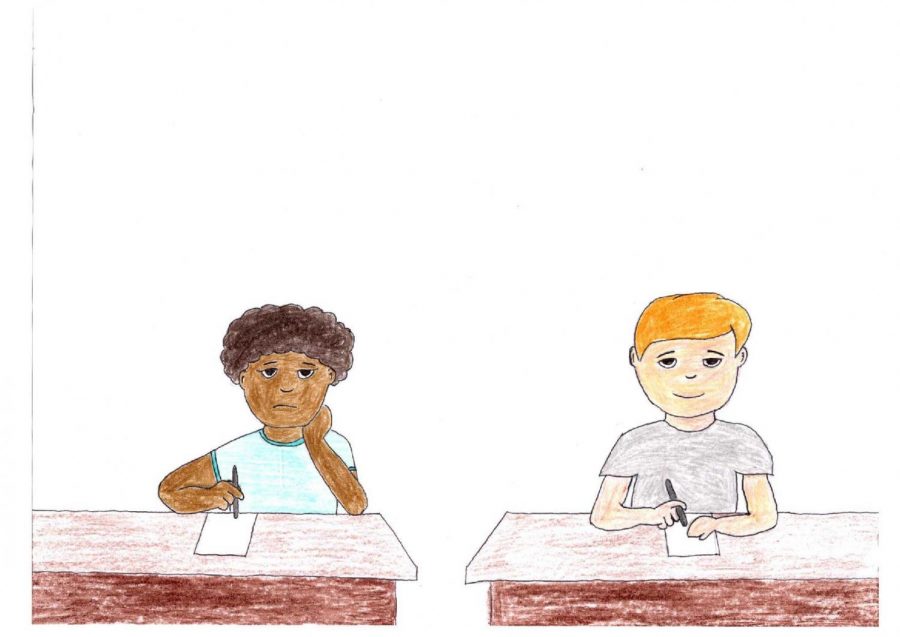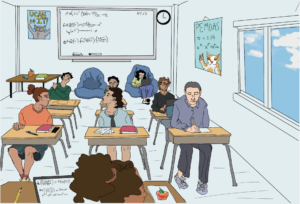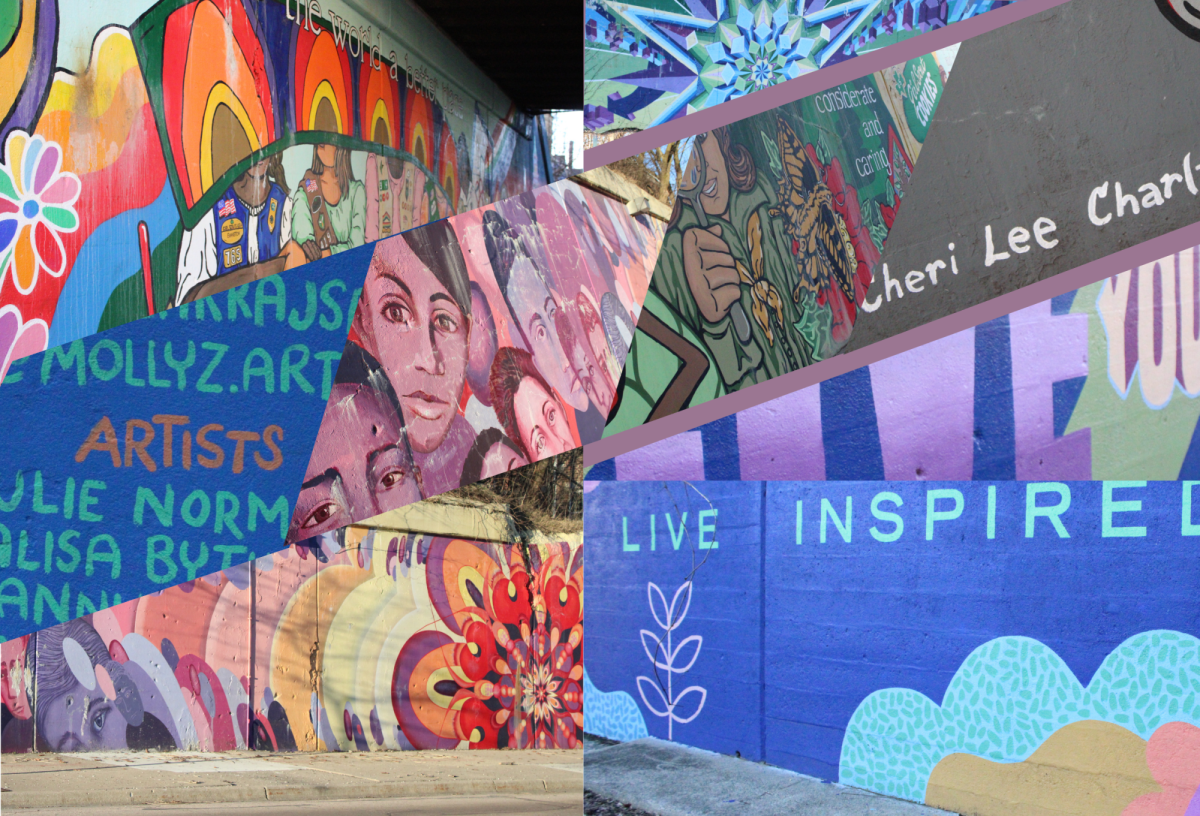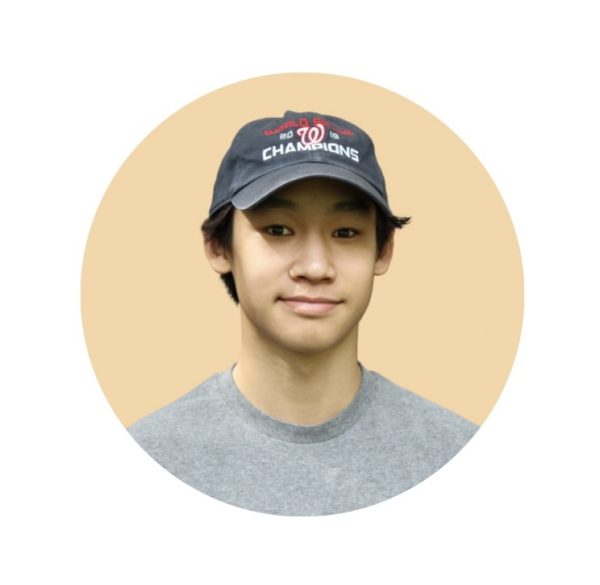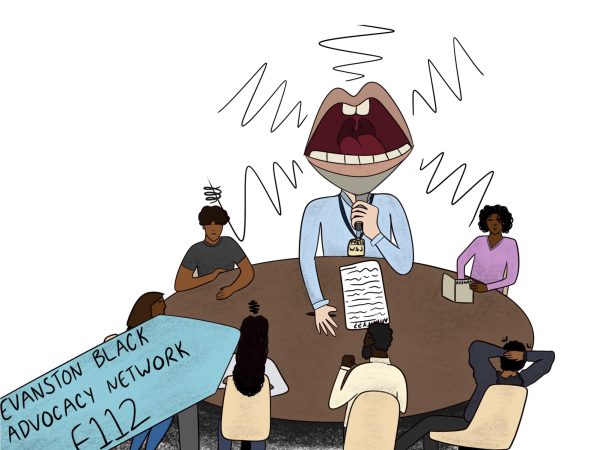Reachable or impossible: Complexities of the achievement gap in AP classes
August 21, 2019
As a junior of the 2019-2020 school year, I’ve learned a few things about my high school. For example, I’ve come to realize that ETHS prides itself on being in the top two academic percentages nationwide. Our school is rich in diversity and history, with a wide variety of classes to choose from. Not to mention that we have generations of students and alumni willing and ready to fight for our orange and blue flag in various sports teams. And while I’m bragging, we are more liberally advanced than other schools with our numerous race and gender/sexuality summits. But, with all that being said, there are still places at ETHS where our classrooms and common areas lack diversity. In fact, one of my biggest fears about this upcoming school year was me taking an AP class and being one of the few students of color in it.
Recently, I attended an AP Summer camp hosted at ETHS. A Team ASAP (All Students for Advanced Placement) leader asked us to fill out a questionnaire about our concerns with taking AP classes. When all of the students were asked to share with the group, I vocalized that one of my fears was going to be the lack of diversity in the class. The leader had then acknowledged my concern by saying that we’ve probably heard that AP Language and Composition was mostly a white class. Well, one thing Team ASAP does is try to bring students who suffer from all factors of the achievement gap together, and in AP classes, or at least try to help them as much as they can. Whether it be the financial, gender, or racial aspect of the achievement gap, their goal is to help.
I am aware of how many students of color will be taking honors and AP classes this year, and I believe there are still not enough. Approximately 30 percent of all students at ETHS who take an AP exam is a student of color when considering that 976 students took AP exams in 2018 based on information from school board meetings in early 2018 and publicly released information from the ETHS. One of the biggest reasons for this disparity stems from the achievement gap. The Glossary of Education Reform defines the achievement gap as “any significant and persistent disparity in academic performance or educational attainment between different groups of students.” Which – to put it bluntly – means that any reason (could be financial, housing, other economic factors) why one group of students (usually all with something in common, like race or gender,) succeeds or excels more than another group of students (also, all usually with something in common).
Veronica Hernandez, a Mexican American ETHS junior, is a victim of the achievement gap herself. When asked about her living situation, she replied with “I have 6 people in my house that I have to make sure are up and get to school on time, two of which go to school out of Evanston’s district. I’m the oldest in the house of 5 kids, and my mom works an early morning shift, leaving at 5:30 in the morning. So it’s on me to do those things.” When she spoke more in-depth about her housing situation, she said; “I live in a bad neighborhood. In that neighborhood, there’s usually gangs, gunshots at night, and it’s just generally a bad place. I wouldn’t want my siblings coming home late, because it’s just that bad.”
I also had the chance to interview high school student Sanaa King, a biracial close friend of mine who now lives in Denmark, about her experiences in her current school versus her experiences having attended Evanston public schools. Her story also sheds light on another aspect of the achievement gap that is can be relevant to any student population: language barriers.
“It took me a little bit because it was a whole new language to learn.” She explained to me that she often used to get bullied because of the language barrier, which also made it harder for her to do well in school. “I wasn’t good at Danish and because I had an accent I was teased. I tried to tell the teacher, but she didn’t believe what I said. It made me not want to go to school.”
Nayhaly Williams, a junior, told me about how her experiences with the achievement gap merged with her experiences with gender, race and financial security. When originally asked about which aspect of the achievement gap related to her the most, she said financial.
“I have a lot of financial instability,” Williams starts. “That affects my attendance at school, my priorities, and not to mention, all the missed opportunities. “For example, in the winter, my mom didn’t have a car. She didn’t want me and my brothers to walk in snowstorms and blizzards, so she often let us stay home from school. We started to fall behind, and once you fall far enough behind, you don’t even want to try anymore. You don’t want to try in your regular classes, so why would you even think about honors and AP classes?”
She also talks about what it’s like to be Afro-Latina girl in her household.
“My little brother found a mother in a big sister. My big brothers are allowed to do whatever they want, whenever they want, and they get away with it. Me, on the other hand, I get screamed at for being a ‘bad sister’ if one day I’d like to hang out with my friends instead of watching my little brother, when my two older brothers are available.” She then continues with, “a lot of Latin girls take on the role of mom. If we don’t, who will?” Williams brought up a powerful point about three aspects of her life corresponding with the achievement gap.
As I previously mentioned, one of my biggest fears going into an AP class will be the lack of diversity I’ll see because of the achievement gap. The achievement gap stems from factors like language barriers to gender and race. Although there is no clear solution to the achievement gap, I can provide solutions that educators and administrators can partake in that’ll benefit the students and overall potentially lessen the achievement gap. One of the most impactful actions a staff member can do for a struggling child is check in. For educators, being sympathetic and willing to work with students and their various situations equitably, is essential to lessen the achievement gap. Students like Nayhaly have serious situations that cause them to fall behind, and without the proper help, students like her begin to develop a negative fixed mindset about school which reinforces and even widens the achievement gap.
With all my fears being said here about being in an AP class and the lack of diversity in these classes, I will continue to acknowledge the beneficial resources my family and I do have (financial stability, a car, a quiet neighborhood) and use them to the best of my ability to not let my fear of lack of diversity in AP classes hinder me from doing well in my AP classes.

